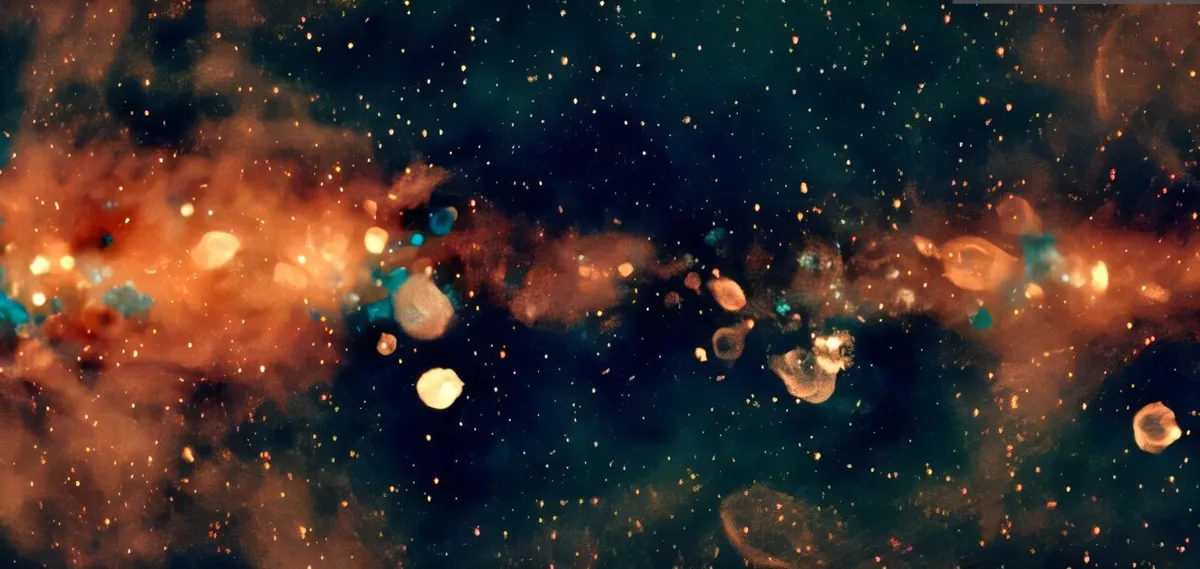
A groundbreaking achievement in the field of astronomy has been realized by researchers from the International Centre of Radio Astronomy Research (ICRAR). They have successfully created the largest low-frequency radio color image of the Milky Way galaxy ever compiled. This stunning new image captures the Southern Hemisphere view of our galaxy, showcasing it across a wide spectrum of radio wavelengths and illustrating the vibrant colors of radio light.
The findings of this remarkable project are detailed in a paper published in the Publications of the Astronomical Society of Australia. This significant work paves the way for astronomers to explore various aspects of stellar life cycles, including the birth, evolution, and death of stars within our galaxy.
Silvia Mantovanini, a dedicated Ph.D. student at the Curtin University node of ICRAR, devoted an impressive 18 months and over 40,000 hours to construct this intricate image. Utilizing the power of the supercomputers at the Pawsey Supercomputing Research Centre, she processed and compiled data from two extensive surveys conducted using the Murchison Widefield Array (MWA) telescope. This telescope is situated at the Inyarrimanha Ilgari Bundara, within the CSIRO Murchison Radio-Astronomy Observatory on Wajarri Yamaji Country in Western Australia.
The data for this image was derived from two major surveys: the GaLactic and Extragalactic All-sky MWA (GLEAM) and the GLEAM-X (GLEAM eXtended) surveys. These surveys were conducted over a total of 141 nights, with the GLEAM survey taking place over 28 nights in 2013 and 2014, followed by GLEAM-X which spanned 113 nights from 2018 to 2020.
This new image represents a significant leap in technological advancement, offering twice the resolution, ten times the sensitivity, and covering twice the area compared to the previous GLEAM image released in 2019. Such enhancements are vital for conducting a more detailed and thorough study of the Milky Way, providing astronomers with a remarkable wealth of new data and insights.
According to Mantovanini, "This vibrant image delivers an unparalleled perspective of our galaxy at low radio frequencies." It offers crucial insights into the evolution of stars, detailing how they form in different regions of the galaxy, their interactions with other celestial objects, and their ultimate demise. Mantovanini's research specifically focuses on supernova remnants—the expanding clouds of gas and energy that remain after a star explodes at the end of its life.
Despite hundreds of supernova remnants already identified, astronomers believe that thousands more are yet to be discovered. The newly created image enables researchers to differentiate between the gas surrounding new stars and that left by deceased ones, thereby revealing clearer cosmic patterns. "You can clearly identify remnants of exploded stars, represented by large red circles, while smaller blue regions indicate stellar nurseries where new stars are actively forming," Mantovanini explained.
This groundbreaking image may also play a pivotal role in unraveling the mysteries surrounding pulsars in our galaxy. By measuring the brightness of pulsars at different GLEAM-X frequencies, astronomers aim to deepen their understanding of how these enigmatic objects emit radio waves and their locations within the Milky Way.
Associate Professor Natasha Hurley-Walker, the principal investigator of the GLEAM-X survey, highlighted the significance of this achievement, stating, "This low-frequency image allows us to unveil large astrophysical structures in our galaxy that are difficult to image at higher frequencies." Notably, no low-frequency radio image of the entire Southern Galactic Plane has been published previously, marking this as an exciting milestone in the realm of astronomy.
Looking ahead, only the world's largest radio telescope, the SKA Observatory's SKA-Low telescope, which is set to be completed in the next decade on Wajarri Yamaji Country in Western Australia, will possess the capability to surpass this image in terms of sensitivity and resolution, concluded Associate Professor Hurley-Walker.